
Provincial officials of Shanxi inaugurate the groundbreaking ceremony for a convention and exhibition center at the Shanxi Transition and Comprehensive Reform Demonstration Zone on Jan 1. LI LIANJUN / FOR CHINA DAILY

Staff members at an enterprise in Hejin city study the guidelines proposed by the Fifth Plenary Session of the CPC Central Committee. LI ZHUANGGUO / FOR CHINA DAILY
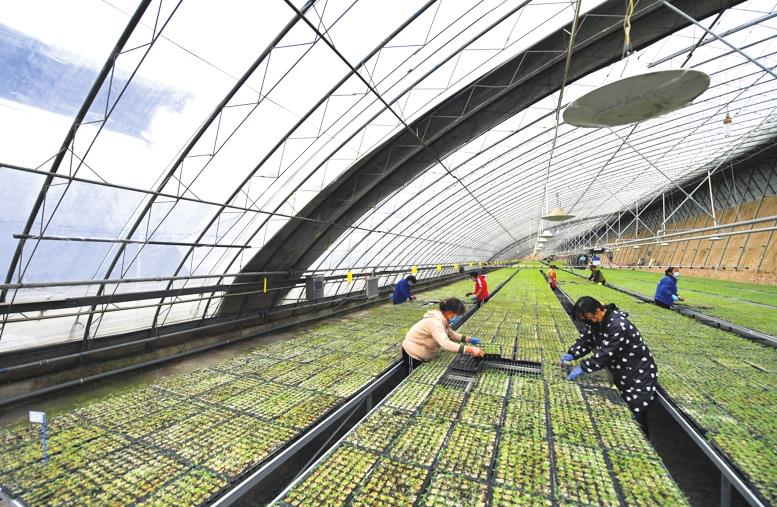
Farmers work at a modernized greenhouse for crop seedling cultivation.LI ZHAOMIN / FOR CHINA DAILY

Staff members of a natural gas company in Shanxi check and maintenance equipment at a gas distribution station in Taiyuan. LIU TONG / FOR CHINA DAILY

Workers assembles new?energy heating pumps at manufacturing company in Taiyuan. SUN RONGXIANG / FOR CHINA DAILY
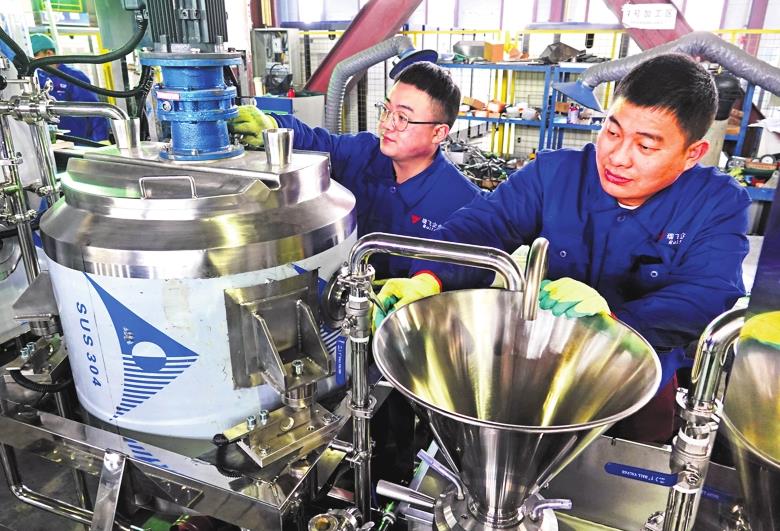
Mechanics check dairy production machines at a food machinery company in Taiyuan. LIU TONG / FOR CHINA DAILY
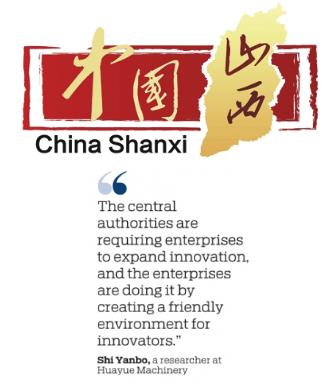
Directed by the guidelines of the Fifth Plenary Session of the Central Committee of the Communist Party of China, Shanxi province is on track to high-quality development that features innovation, new-type urbanization, advanced manufacturing, agricultural modernization and a steady balance between economic growth and environmental protection.
The Fifth Plenary Session of the CPC Central Committee was held in Beijing on Oct 26-29. It adopted the CPC Central Committee's proposals for the 14th Five-Year Plan (2021-25) and long-range objectives for the next 15 years.
In Shanxi, government officials, business executives and even staff members of companies have studied the Plenary Session's documents carefully. They all hope to use the conference's proposals to guide their actions.
Since November last year, staff at the Shanxi branch of Beijing Natural Gas Pipeline Engineering based in Xinzhou city have held a number of meetings to learn about the plenary session documents.
Innovation highlighted
Wang Zhiwei, head of the BNGPE branch company, said innovation is a principal concept of the plenary session.
"The communique of the plenary session said China will continue to seek high-quality development,"Wang said. "In my understanding, innovation is crucial for such a growth pattern."
The executive noted that innovation is also a powerful engine to drive the growth of an enterprise.
The BNGPE Shanxi branch is in charge of the construction, operation and maintenance of the Shanxi section of a pipeline system linking the natural gas producers in Northwest China's Shaanxi province and natural gas consumers in North China's Shanxi and Hebei provinces as well as the national capital of Beijing.
The total length of the pipelines in Shanxi is 1,027 kilometers, starting from the border of Shaanxi and Shanxi in the west and ending at Shanxi's border with Hebei in the east. It supplies 98 percent of the total natural gas demand in Beijing and 35 percent of the demand in Shanxi.
Wang said the BNGPE Shanxi branch has applied more than 90 innovative technologies to its construction and operation of the project, including one invention patent and 26 patents for utility models.
"One of the patents is related to the autonomous maintenance of natural gas compressors, which has generated a benefit of nearly 40 million yuan ($6.18 million)," he said.
In addition to economic benefits, the system has helped to improve efficiency and safety for maintenance mechanics, Wang said.
Also regarding innovation as a cornerstone of a company's success is Huayue Machinery, based in Yangquan city in the east of Shanxi province.
Huayue Machinery has grown from a small firm for the maintenance of coal-mining machines in the early 1950s to one of China's top 50 coal-mining machinery companies. Its sales revenue of 3.1 billion yuan in 2019 ranked it ninth on the list.
The company now has a team of young but experienced technology professionals. Shi Yanbo is a core member of the team.
Shi, in his 30s, is the head of a group of engineers and technicians who have designed and developed a number of systems to improve production efficiency.
One of their innovative achievements is a comprehensive testing and maintenance platform for the electrohydraulic system, which Shi said can lead to a 200 percent increase in testing efficiency and a 35 percent increase in accuracy.
As the electrohydraulic system is a key element of coal mining, its testing and maintenance is a frequent task of coal-mining companies.
"The platform uses automatic testing to replace traditional manual methods. We can complete the testing and maintenance mission for 300 sets of electrohydraulic equipment in just one month," Shi said.
Shi has worked with the research team for electrohydraulic equipment maintenance since graduating from a local university in 2012.
He said one of his reasons for staying with the team is the company's incentive policies that encourage innovation.
In 2019, the company awarded 303,000 yuan in total to employees who made outstanding contributions to research and development.
"Shi has been a frequent award winner over the years," said Ma Haili, a senior executive of Huayue Machinery.
Shi said he is even more encouraged by the central authorities' determination to prioritize innovation in the nation's development, as evidenced by the Fifth Plenary Session.
"I am optimistic about my career development as an R&D professional," Shi said."The central authorities are requiring enterprises to expand innovation, and the enterprises are doing it by creating a friendly environment for innovators," Shi said.
Modernizing agriculture
The communique of the Fifth Plenary Session says China will prioritize the development of agriculture and rural areas to fully advance rural vitalization. So Shanxi is exploring new ways to modernize its agriculture and promote the high-quality development in its rural areas.
Xinzhuang village is currently a major grain producer in Yuxian county in the east of Shanxi province.
But it won this status only a few years ago after efforts were made to modernize its agriculture.
Guo Yongfeng, a farmer in the village, recalled a challenging past.
"The farmlands were small pieces scattered in the valleys, which didn't allow farming with large machines," Guo said. "There were no proper roads for the machines to approach the farmlands and the situation became even worse when it rained."
He added that the soil condition was also harmful to farming. "The soil thickness was between 15 and 20 centimeters, meaning it could not retain water or nutrients."
A farmland improvement project started three years ago. By the end of 2019, more than 70 hectares of farmland had been improved, with soil thickness increased to 60 cm. A water-saving irrigation system had been added and 15.5-kilometer roads were built to cover all the farmlands in the village. The scattered farmlands have been integrated into larger ones.
Guo Husheng, a village official, said the village is among the many rural communities to benefit from the local government's financial support.
The county government invested 45.75 million yuan in 2019 to improve more than 2,000 hectares of farmland in 16 villages across eight townships, according to the Yuxian bureau of agriculture.
"The communique of the Fifth Plenary Session said agricultural modernization will be basically realized in China by 2035," Guo Husheng said. "With the strong support from the central and local authorities, I believe the objective can be realized in Xinzhuang village and Yuxian county ahead of schedule."
Urbanization
While pushing forward agricultural modernization, Shanxi is also using urbanization for a more balanced development between rural and urban areas.
This move aligns with the guidelines of the Fifth Plenary Session, which says "China will advance coordinated regional development and a new type of urbanization".
In April 2020, the CPC Committee and the provincial government of Shanxi announced plans to develop three provincial subcenters in Linfen in southwestern Shanxi, Datong in the north and Changzhi in the southeast.
In Linfen, local authorities have quickly responded to the decision.
The city government released a plan to develop into a base for emerging industries, especially the smart manufacturing sector.
Local authorities said the subcenter strategy also aims to offer opportunities for industrial development and balanced rural and urban growth.
Officials said new local plans require the development of industrial zones and urban facility construction in downtown Linfen as well as the towns surrounding the city.
To date, Linfen has implemented more than 20 infrastructure projects, including construction and renovation of roads inside the city that link the city to nearby industrial zones and rural areas.
Although not on the list of provincial subcenters, Shuozhou in the north of Shanxi has adopted a similar approach to development.
An industrial park for small and medium-sized manufacturing enterprises was founded in the Shuozhou Economic Development in March last year. Over the past nine months, the park has attracted more than 30 companies.
A unique selling point of the park is that it offers ready factory buildings for investors, allowing them to begin operations immediately.
"Shuozhou stresses SMEs because they are major players in contributing to local economic growth and creating job opportunities," said an official at the industrial park.
Environmental protection
Amid the efforts of Shanxi authorities to boost economic growth, an equal emphasis has been put on environmental protection.
This is in accordance with the requirements of the Fifth Plenary Session, which says in its communique that "China will advance green development and promote harmony between humans and nature".
On Dec 18, workers at the central control center of Feixiang Casting based in Yicheng county pushed buttons to kickstart the newly installed "mist cannon trucks" in its plant.
The mist cannon trucks are used for pollution control in manufacturing sites, as the mist suppresses dust when it sprays.
This was the company's latest move in environmental protection after investing in desulfurization and denitrification equipment, which cost 92 million yuan and began operation in September.
"With strict environmental measures in place, we are now a leader in green production in Yicheng," said Chen Wenjie, deputy general manager of the company.
Behind Feixiang's efforts is the provincial authorities' determination in pollution control.
Over the past five years, the province has implemented a long-term campaign to curb pollution of the air, water and soil. Strict environmental standards have been imposed on industries with the greatest potential for polluting, such as coal-mining, coking and metallurgy.
There are also moves to restore the ecological environment by returning farmlands to forests, grasslands and wetlands.
Local statistics show the average concentration of PM2.5-particular matter with diameter less than 2.5 micrometers-during the first 10 months of last year was 42 micrograms per cubic meter, a decrease of 8.7 percent from the same period in 2019.
The average concentration of sulfur dioxide was 18 mcg per cu m, a drop of 25 percent year-on-year. The rate of decrease was 41.1 percent in 2018 and 20 percent in 2019.
By YUAN SHENGGAO
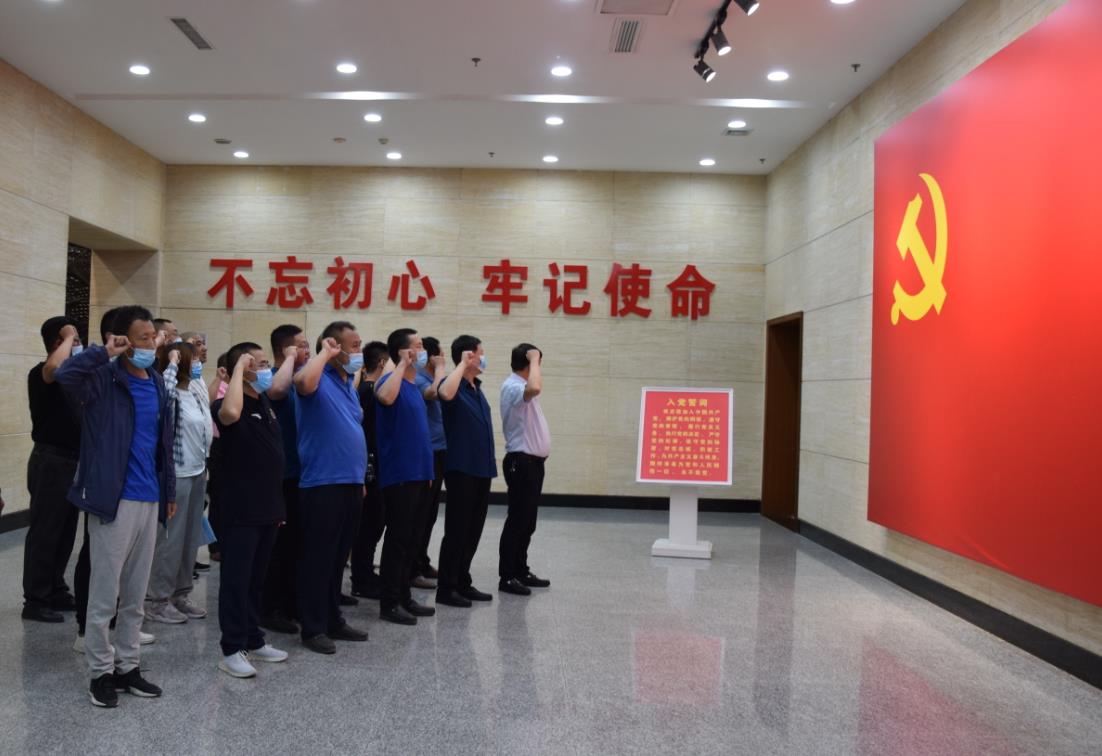 山西路桥:党建引领 建好“四好农村路”山西路桥建设集团党委扎实开展“党建质量提升年”,实施“六大工程”,立足“十四五”高质量、高速度、高效益发展的战略基点,全面提高党建质量和党建引领发展水平,为打造“国内一流的交通基础设施投资、建设、施工现代化企业集团”提供坚强政治保障。
山西路桥:党建引领 建好“四好农村路”山西路桥建设集团党委扎实开展“党建质量提升年”,实施“六大工程”,立足“十四五”高质量、高速度、高效益发展的战略基点,全面提高党建质量和党建引领发展水平,为打造“国内一流的交通基础设施投资、建设、施工现代化企业集团”提供坚强政治保障。
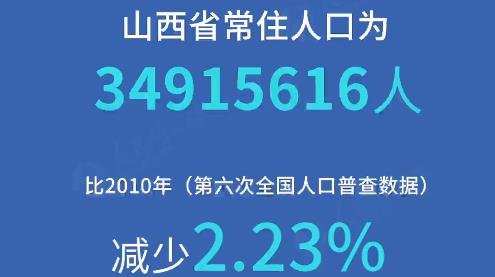 常住人口3491万 山西人口普查数据"出炉"山西省统计局向社会通报山西省第七次全国人口普查主要数据。数据显示,山西省常住人口为34915616人,比2010年(第六次全国人口普查数据,下同)减少2.23%,年平均减少0.23%。山西省常住人口总量减少,主要受人口流动变化等因素影响。
常住人口3491万 山西人口普查数据"出炉"山西省统计局向社会通报山西省第七次全国人口普查主要数据。数据显示,山西省常住人口为34915616人,比2010年(第六次全国人口普查数据,下同)减少2.23%,年平均减少0.23%。山西省常住人口总量减少,主要受人口流动变化等因素影响。